
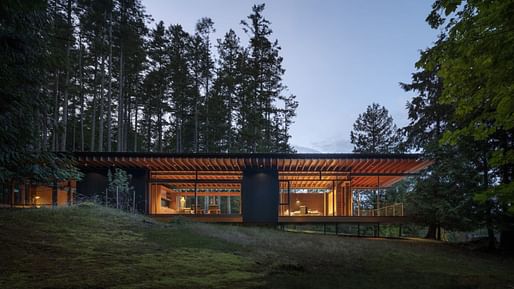
Nine projects across the United States and Costa Rica have been selected as part of the 2023 AIA Small Projects Awards.
The 20th edition of the program, which was established through the AIA’s Small Project Design (SPD) Knowledge Community, is meant to recognize the quality of the work of small practitioners across four categories while at the same time recognizing the “value and design excellence that architects can bring to projects, no matter their size or scope.”
This year’s recipients were selected in two categories: Category 2 - Small project construction that could cost up to $2,500,000 in construction and Category 3 - Small project construction, an architectural object, work of environmental art, or an architectural design that is under 5,000 square feet.
More information about each winning project can be viewed below.
Liberation Coffee House by ORA (Los Angeles, California)
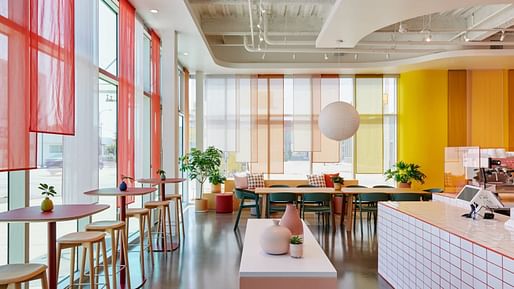
Project details: "Its primary design element is a series of overlapping sheer fabric panels that bathe the space with a gradient of color reminiscent of a California sunset. The panels, composed of affordable fabrics sourced from minority-owned businesses, also reduce solar heat gain and soften views to the outside. They are simple to install, so the staff can maintain and update the panels easily. The design has helped attract a diverse patron base, with repeat customers from nearby apartments, Hollywood studios, and businesses who appreciate that their purchases directly support center programming. As a whole, the coffee house’s design strategies have shaped a project that belies its limited budget and stands as a model for similar centers across the country."
Jade Alley by Daniel Toole Architecture (Miami, Florida)
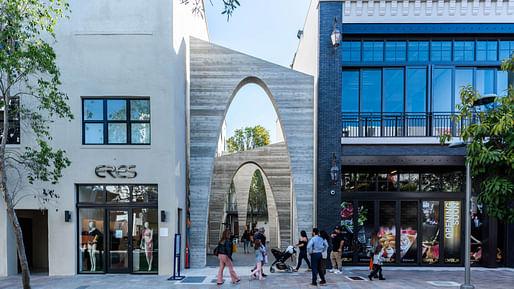
Project details: "This sleek intervention in Miami’s recently revitalized design district has transformed an alleyway into an iconic public place. It was born from a local AIA-funded research grant that allowed the design team to publish a book on alleyway research, which the district’s developers discovered online. With its ancient ruins-like series of parabolic concrete arches, Jade Alley has evolved from a leftover urban space beset by dumpsters into an intriguing destination for the community. Geometry similar to the arches has been applied along the alley’s new storefronts and scaled down to turn existing trash and mechanical rooms into small retail and dining spaces operated by local businesses. Jade Alley also features an evolving series of murals and art installations by artists from Miami and around the world. Those works have combined with a series of free art walks, performances, and other activities to firmly cement the space in the city’s cultural scene."
Mini Mark Park by GO'C (Seattle, Washington)
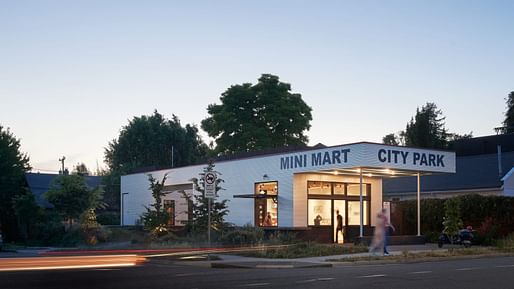
Project details: "Mini Mart City Park, a community-focused cultural center and park in Seattle’s Georgetown neighborhood, has radically transformed a derelict gas station into a vibrant hub for creativity and the arts. The project is a collaboration between the design team and artist group SuttonBeresCuller, which purchased the brownfield site, that explores the potential of architecture and art to mend an urban concern. With more than 700 similar gas stations in the region and more than 200,000 across the country, Mini Mart City Park is a model for remediation that results in compelling and much-needed community spaces."
Kingsbury Commons at Pease Park by Clayton Korte (Austin, Texas)

Project details: "The team’s design weaves together existing vegetation with a robust program of new amenities that include event rental spaces, restrooms, natural playgrounds, a basketball court, and an interactive water feature that cleverly references the Texas Hill Country’s karst limestone aquifers. Existing features, such as the Civilian Conservation Corps-era picnic tables and the park’s historic Tudor Cottage, were preserved to showcase the park’s rich history [...] The team selected a muted material palette of board-formed concrete and steel that will develop a striking patina with time. Additional amphitheater-style seating was built into the hillside, forming an ideal spot to organize volunteer workdays or for visitors to rest in the shade. Tying the project together is a low ribbon-like limestone wall that unifies the numerous outdoor elements as it snakes through the park. Depending on the elevation, the wall steps up and down, alternating as seating, steps up the hillside, or a band that runs flush with the sidewalk. It also morphs into the water feature that attracts the park’s youngest visitors in the summer."
The Perch by Nicole Blair (Austin, Texas)
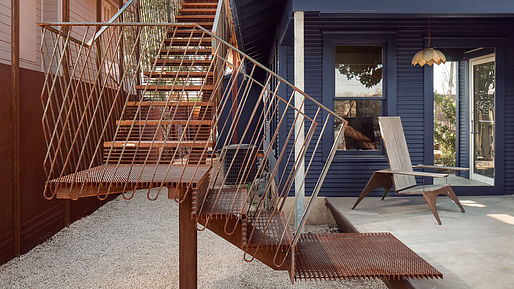
Project details: "It is clad in corrugated Corten siding, chosen for its low maintenance and similarity to existing site elements. A barefoot- and paw-friendly open grate stair, which shares a landing with the main home, leads to The Perch, allowing light to filter through to the landscape below. As someone climbs the steps, those inside can feel slight movement from the front cantilevered room, a gentle reminder of wind and gravity. Structurally, the project sits atop four steel columns, three of which pierce the existing bungalow’s walls to tie the foundations together. Its steel frame was built off-site and was installed via crane in a single day, minimally disturbing the site. Throughout the space, the structural steel is exposed and painted white, while bent copper plumbing fixtures and recessed finger pulls echo the siding’s warm tones. Much like the exterior, the interior’s materials were selected for economy and durability and include tongue-and-groove walls and ceilings, off-the-counter butcher block countertops, and standard porcelain sockets and pendant lights the clients had already purchased. The project’s wood floors are a blend of pre-finished plain and rift-swan white oak, overages from a larger project."
Pima Dynamite Trailhead by WEDDLE GILMORE black rock studio (Scottsdale, Arizona)

Project details: "The new trailhead was designed by the team to promote responsible interactions between visitors and the preserve’s natural environment while connecting them to its meandering trails. It was delicately integrated into the existing natural drainage flows and topography between two power line corridors that traverse this section of the preserve. Wrapped in a Coren steel skin that allows it to weather pleasingly in the desert, the trailhead contains restrooms, an amphitheater, meeting space, and staff offices and facilities. Development of the site also focused on maintaining and protecting the existing water flows. The new trailhead is perched on a topographic high point with vehicular and equestrian parking located below to provide unimpeded flow to the three major washes that traverse the site. Permeable surfaces comprise the equestrian parking, while riprap-formed swales and basins capture run-off from the vehicle parking area’s durable surface."
Costa Rica Treehouse by Olson Kundig (Santa Teresa, Costa Rica)

Project details: "Built for environmentalist clients who surf, this carbon-positive house is inspired by the jungle that surrounds it on Costa Rica’s Pacific coast. The home is made entirely of locally harvested teak, and it engages with the jungle on each of its three levels. It was envisioned as an open-air surfer’s hut that allows ocean breezes and ample daylight to permeate its spaces. In the new home, the ground floor opens to the jungle floor, while the middle level is nestled in the trees. The top-level stands above the tree canopy, offering the family sweeping views of surf at nearby Playa Hermosa beach. A series of wooden screens—hand-operable to foster active engagement with the context—on all floors allow air and light into the house. As a result, the quality of light shifts throughout the day as framed and filtered views respond to the interplay of light and shadow."
Henry Island Guesthouse by Bohlin Cywinski Jackson (Henry Island, Washington)
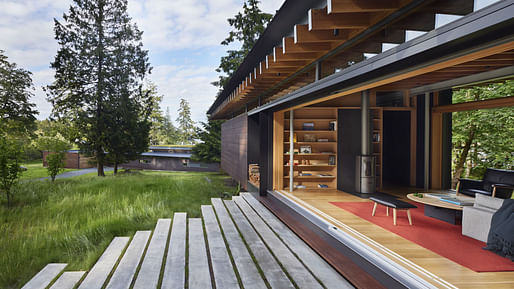
Project details: "The 1,350-square-foot guesthouse sits uphill from the primary home and marks the transition from dense forest to sunlit meadow. One end is anchored into the gentle slope, while its opposite hovers above the landscape upon slender columns. The program includes a pair of bedroom suites, each with distinguishing characteristics requested by the client, and a central living area that features a small kitchen where guests can begin and end their day on the island. The guesthouse’s adjacency to the main residence fosters a connection between both buildings while still maintaining privacy and respect for the site’s natural characteristics. Materials for the main residence comprised steel, exposed Douglas fir framing, and glass, with weathered steel and cedar wrapping the exterior. Similar materials were used in the guesthouse to form a visual link between the two. The guesthouse’s entrance is signaled by a cast-in-place concrete ledge, which further tethers the building to the earth, and an aperture within the steel wall. Drawing inspiration from the main residence’s breezeway, the guesthouse’s form was envisioned as a covered porch flanked by its bedroom suites. Large sliding-glass doors that disappear into the walls on two sides open the space to the sights, smells, and sounds of the secluded island."
West Campus Residence by Alterstudio (Austin, Texas)
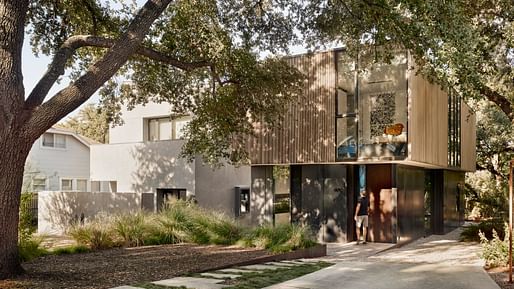
Project details: "The lower level takes advantage of its position beneath the tree canopy, its tempered daylit environment an important respite from the ever-present Texas sun. It is darker and more tactile than the second floor, with soapstone counters, mill-finished steel paneling, and white oak throughout. The second floor, by contrast, is the lower level’s bright counterpoint. Its bedroom windows project beyond the floor and ceiling, giving its occupants a sense of spilling out into the surroundings. There, smooth-finish drywall prevails, while oak flooring and limited steel create a link to the spaces below. Overall, this home eschews housing trends dominating nearby Austin neighborhoods and prevailing real estate guidance. At just 1,922 square feet, it easily accommodates a family of five through a series of inventive solutions that support spatial efficiency and generosity."
Learn more about this year's winning projects here.
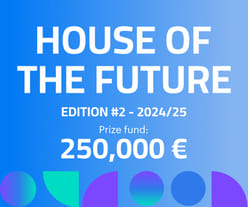
250,000 € Prize / HOUSE OF THE FUTURE 2024/25
Register by Wed, Apr 30, 2025
Submit by Mon, Jun 2, 2025

The Last Nuclear Bomb Memorial / Edition #5
Register by Thu, Jan 16, 2025
Submit by Wed, Feb 19, 2025
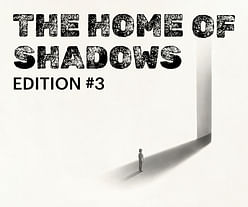
The Home of Shadows / Edition #3
Register by Wed, Jan 29, 2025
Submit by Mon, Mar 3, 2025

Land Art Generator Initiative 2025 Fiji: Climate Resilience for Island Communities
Register/Submit by Mon, May 5, 2025
No Comments